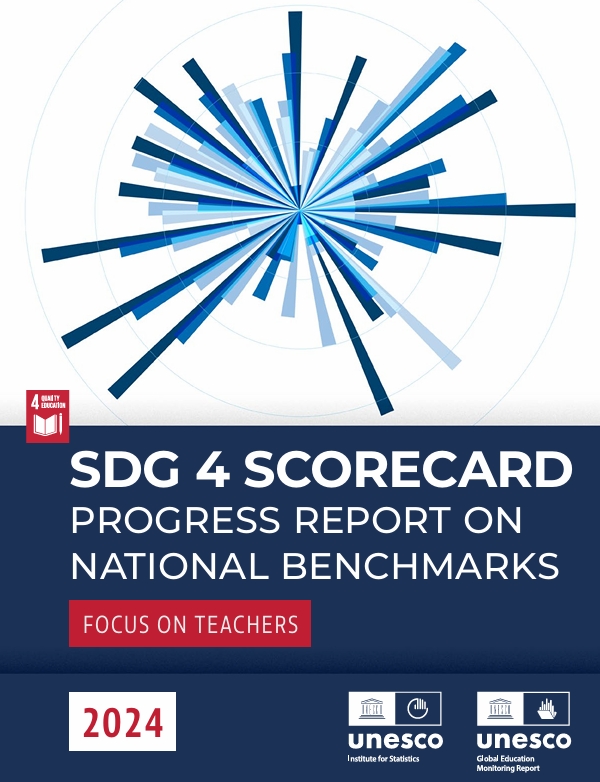The unheard impact: technology and the teaching profession
Education International (EI) recently hosted a consultation event to provide feedback into the 2023 Global Education Monitoring Report on technology and education.EI members from across the world made it clear that technology is being woven into education in ways beyond a piece of equipment in a classroom. It shapes curricula, pedagogy, teacher management systems, and the nature of the profession itself. Technology is not only changing how we teach, but what we teach, who teaches and, as the pandemic has shown, where we teach, as schools and teachers implemented and led an almost overnight shift in the delivery of teaching and learning. While it enables access to education during school closures, technology also creates a new context that both teachers and learners need to adapt to and navigate, with new challenges and consequences.However, the ways in which technology in education is impacting the teaching profession itself are often overlooked. To provide a more holistic perspective, the consultation centred around teachers’ working lives. The consultation generated some lively discussion and identified three salient takeaways on the ways technology in education impacts the teaching profession.
Working conditions
The implementation of technology and the move to teleworking has had a profound impact on the working conditions and well-being of teachers and education service personnel. EI’s Global Report on the Status of Teachers 2021 shared a concern that technological advances and policy changes are contributing to increased workloads and decreased wellbeing. The lines between work and home have become blurred, as the right to disconnect has been challenged.
Teachers expressed how technology, which should in theory reduce the administrative load, is increasing the administrative burden in practice. They raised concerns around digital privacy rights, regarding not only student but also teacher data. For instance, the input of teacher management systems to track teacher attendance can often lead to repercussions for teachers, while failing to address the root causes of teacher absenteeism. The ease of data capture, storage, and surveillance in digital spaces requires robust regulation, oversight and regular auditing by teachers and their unions.
Curriculum and assessment
The curriculum and pedagogy are also transforming due to technology. While digital skills and STEM subjects are becoming a priority, subjects which can be more easily digitized are being deprioritized, at the expense of the breadth of learning opportunities. Similarly, as systems switch to digital assessments, curriculum is narrowing to be shaped by tests. Teachers are also concerned on the ways in which inequity is exacerbated when using digital tests (typing speed, familiarity with the device, navigating the testing browser, etc).
There were serious concerns raised around who owns and develops the curriculum. As teachers are placing more of their content onto digital platforms such as Google Schools, teacher ownership of the curriculum, resources, and content that they developed, which can include worksheets, readings, videos, audio files, and lectures, is unclear. Once the content has been uploaded onto the platform, when it goes onto the platform, it is owned by the employer but is also accessed by the technology company and mined for data.
At the same time, an increasing amount of EdTech companies are moving into the curriculum development space, selling it together with devices. New forms of ‘shadow education’ through online courses, digitally enhanced private tutoring and even social media platforms, mean schools will be increasingly dependent on digital infrastructure provided by giant technology corporations and on resources, tools and platforms provided by the EdTech industry. EI affiliates expressed concerns over the lack of information on how much money and data is being exchanged in contracts between education systems and these companies. This raises questions about who is creating and delivering free, high-quality content being presented in schools: teachers with professional expertise and experience or technology giants?
Nothing about teachers, without teachers
Decisions around the planning, implementation, regulation, and evaluating of technology includes the training, curricula, pedagogy, and materials or equipment being used. Teachers, school leaders, and education service personnel must be included in these decisions.
In a 2020, EI study, Teaching with Tech, we found that 45% of respondents were not at all consulted with regards to the introduction of new digital technologies, while 29% were consulted on only a few aspects. Unilateral top-down decision-making means that teachers have no opportunity to raise questions or flag concerns before implementation. This also holds true for monitoring and evaluating technology.
Union leaders from Australia and Taiwan, Province of China, shared examples of how the quick switch to online assessments, with little input from unions, led to rocky implementation. Social dialogue is a key step forward, particularly in collective bargaining spaces, albeit in a limited capacity. This digital transformation ought to be reflected in collective agreements. In the beginning of the pandemic, EI’s member organization in Argentina, CTERA, reached an important collective agreement with the government, aimed at restructuring work in education during the lockdown and combating the work overload imposed by teleworking. The agreement set out the first-ever defined concept of the right to disconnect, and it required the Ministry of Education to invest in providing technological resources for distance education.
Technology is not going to disappear from schools, and many of the challenges we face with regards to EdTech around equity, access, and quality, existed before the pandemic. However, it is urgent to learn through these experiences, evaluate impact and measure positive and negative effects of the new ways of working. How we use technology should stem from deliberate choices and should not just move forward, blindly accepted as the new normal for the teaching profession with no questions asked.
A report summarizing the key takeaways from this event is available online.






